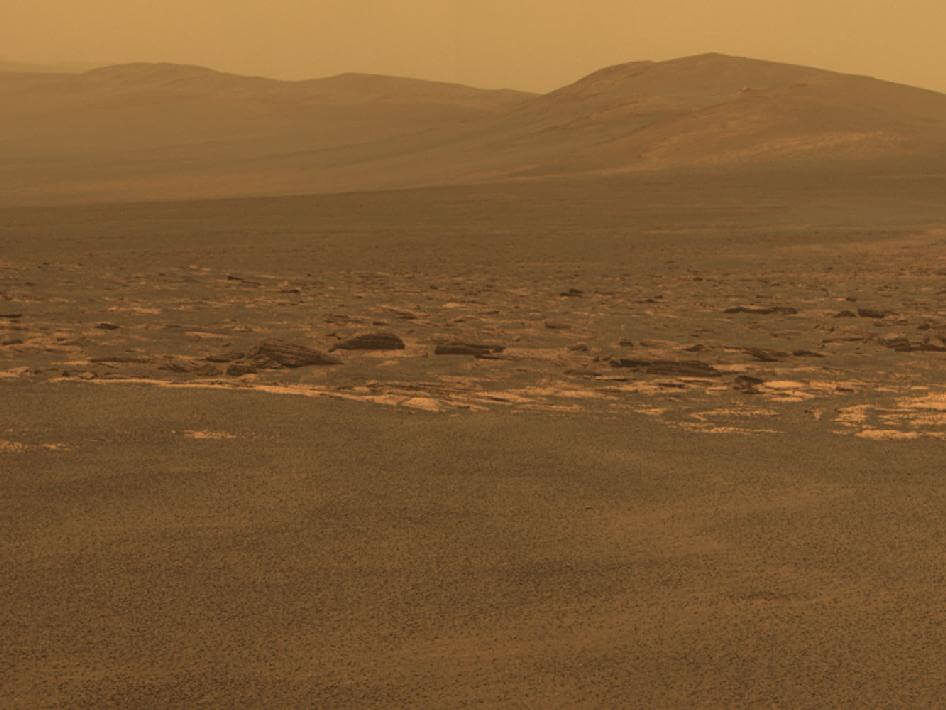On August 9, the small vehicle arrived at a location known as Spirit Point on the rim of the crater. In these three years, Opportunity traveled a distance of 21 kilometers after climbing from Victoria Crater, the subject of his previous study

After nearly three years, the Opportunity rover arrived at Endeavor Crater to explore previously unseen rocks.
On August 9, the small vehicle arrived at a location known as Spirit Point on the rim of the crater. In these three years, Opportunity traveled a distance of 21 kilometers after climbing from Victoria Crater, the object of his previous research.
Endeavor Crater, which is 22 kilometers in diameter and 25 times wider than Victoria Crater. On Endeavour, the scientists expect to see rocks and landscapes much older than those explored by Opportunity in its seven years on Mars. Endeavor became an attractive target after the Mars Orbiter MRO discovered within it clay-related minerals that were likely formed during warmer and wetter periods on Mars.
"We will soon be able to collect soil samples that the rover has not seen so far and analyze them," explains Matthew Golombek, a member of the Mars rover team at NASA's Jet Propulsion Laboratory (JPL) in California. Clay minerals are formed in wet conditions and this may teach us about environmental conditions that were different from those responsible for the rocks that fill the plains."
Spirit Point is the unofficial name of an area from which Opportunity can overlook the crater, it is named after the Spirit twin vehicle that stopped transmitting in March 2010, and in May 2011 it was officially announced that the mission had ended and the communication attempts had stopped.
"Our arrival at our destination is a reminder that these vehicles continued to function well beyond the three months of the mission they were predicted for," says John Callas, director of the Mars Rovers at JPL.

7 תגובות
https://www.hayadan.org.il/images/content3/2011/08/endevour-craterpia14508-43_946-710.jpg
(Photographed in the Judean Desert)
Already have pictures from the crater?
Laitzik - True, but maintaining the staff and the devices that continue to support (for example, when there are problems, they also try a copy of them in Israel to see what the best solution is, etc., etc.) also cost millions of dollars per year. Not that I'm saying it's not worth it, but it doesn't come for free...
Since the project cost 820 million dollars for the two vehicles and was intended to last only 3 months, then every extra day that the vehicle works is a bonus.
to Audi
I suggest you join the mailing list of the Israeli Astronomical Society (free of charge) and once a fortnight you will receive an email with the expected upcoming astronomical events. Search on Google - Israeli Astronomical Society
Shabbat Shalom
Sabdarmish Yehuda
The Israeli Astronomical Society
Yesterday there was a rain of Perseids, does anyone know if there is a google calendar or something like that that can report ahead of time on these magical events?
Twenty-one kilometers in three years, which is seven thousand meters per year, which is about twenty meters per day, which is about eighty centimeters per hour - average speed - no garage, no fuel. Not bad.